Introduction
I became aware of this essay originally written in Greek via a German translation posted on Michael Sailers Blog on September 30, 2025
The original article can be found on the ‘Critical Thinking’ Substack of 0minus Prime and was posted SEP 23, 2025 *by Unbecoming* This article is in Greek.
UPDATE: Oct 13, 2025 – I have to make a correction here. I have just realised that something got lost in a translation which went from English to Greek to German and then back to English again and in that process I got confused. I have attributed the originator of the essay to a Greek author but I now realise this is not correct. The originator of the article is Unbecoming. So my apologies to Unbecoming for my error of crediting. Please bear this in mind when reading what follows:
There is a foreword to the article on Michael Sailors Blog which I have translated from the German into English below. Follow this comes the Greek article which I’ve translated into English (I am taking the liberty of assuming the author who was happy to see a German translation will be similarly fine with an English one). Finally I have added some of my own observations and a Substack post from the UK film maker / journalist Jacqui Deevoy who yesterday posted both on Substack and X about this same topic with very interesting additional information.
This altogether represents the most comprehensive analysis and plausible explanation I have seen so far of the hitherto unexplained phenomena of the fake pandemic hospital dance videos.
Translation of the Foreword of Michael Sailor’s Blog from the German
Dancing nurses! (a guest post)
One of the strangest, most disturbing, and to this day most puzzling phenomena in the early days of the “pandemic” simulation was the sudden and apparently orchestrated flood of videos showing dancing hospital staff. Rehearsed, staged, and produced with astonishing effort in some cases (even involving the use of helicopters for panoramic aerial shots), these films quickly flooded the internet and elicited a range of reactions, from spontaneous joy to bewildered questions about how such a thing was possible when, at the same time, the healthcare systems of the entire Western world were supposedly collapsing. The answer to this question leads straight to the heart of darkness of this entire mass psychological war operation …
A Greek author with the pseudonym 0minus Prime has taken a close look at the mysterious phenomenon of “dancing nurses” on the Substack “Critical Thinking,” and comes to some astonishing conclusions that are still hair-raising even after all this time, making it clear, among other things, that the dance videos were not a curious side effect, but a central instrument of the campaign.
His text was originally published here. I am publishing a German translation with the kind permission of the author.
(The original begins with an exemplary video, which I can only hint at here via photos. Note that this video shows the clinic run by the brother of the later Chancellor Scholz, which became notorious for its particularly lucrative interpretation of the various regulations on the reduction of intensive care beds.)
Now the English translation of the original article in Greek:
Dancing Nurses
Or how they managed to make the population no longer trust their perception of reality…
SEP 23, 2025
*by Unbecoming*
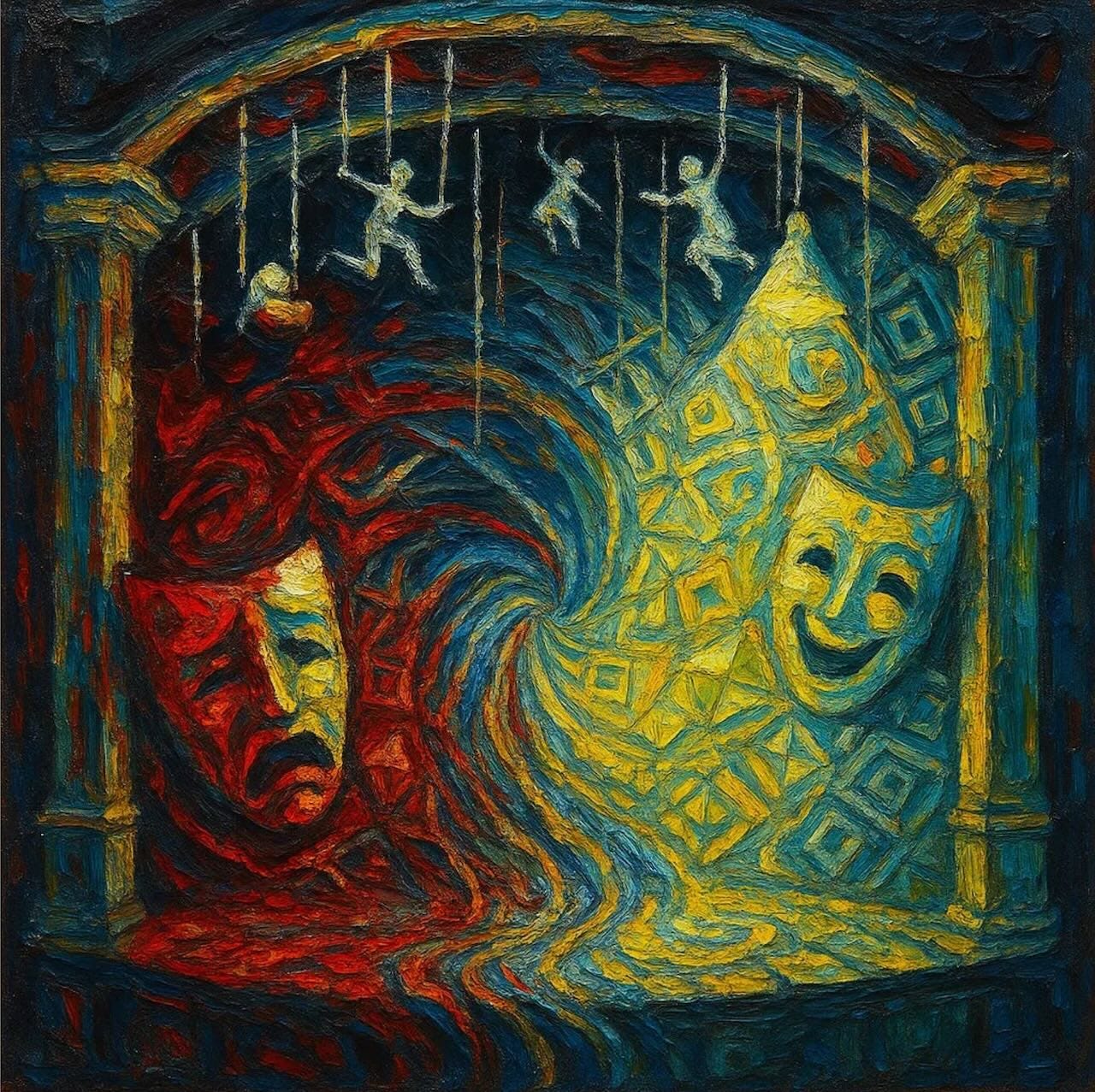
Prologue
Dancing nurses were never about the morale of healthcare workers or stress relief. They were a test, a sorting mechanism, revealing who would accept the contradictions and who would resist them. These videos on TikTok, which appeared simultaneously across all continents while governments declared medical emergencies, represented something unprecedented in the history of propaganda: the authorities showed that they could make populations accept two mutually exclusive realities at the same time.
What we witnessed was not traditional propaganda aimed at persuasion, but something more akin to what abuse experts recognize as gaslighting on a large scale. The psychological mechanism was elegant in its cruelty: it presented citizens with an apparent contradiction—hospitals that were both overcrowded and empty enough for choreographed routines—and then punished them socially for noticing it. Those who pointed out the inconsistency were labeled “conspiracy theorists,” while those who defended the videos unwittingly became pawns in the operation.
This essay explores how this technique fits into the broader context of psychological warfare described by researchers from Paul Linebarger to Michael Hoffman, from Peter Pomerantsev to Annalee Newitz. It examines how the “revelation of the method“ — which shows the audience the manipulation while remaining powerless to resist it — serves to discourage and fragment resistance.
The dancing-nurses were a test for the distortion of reality. Once populations accepted this initial contradiction, they were prepared for more: masks that worked, except when they didn’t, vaccines that prevented transmission until they stopped preventing it, two weeks to “flatten the curve” that ended up being two years. Each accepted absurdity weakened the public’s ability to trust their own observations.
Almost four years later, we can see how this enterprise created precedents that persist. The infrastructure of cognitive control—digital identity systems, social credit mechanisms, curation of reality through algorithmic manipulation—continues to expand. But understanding the technique is the first step toward resistance. This essay is an attempt to capture that moment when the masks came off, when power showed its face, dancing in empty hospital corridors while the world sank into panic and manufactured fear.
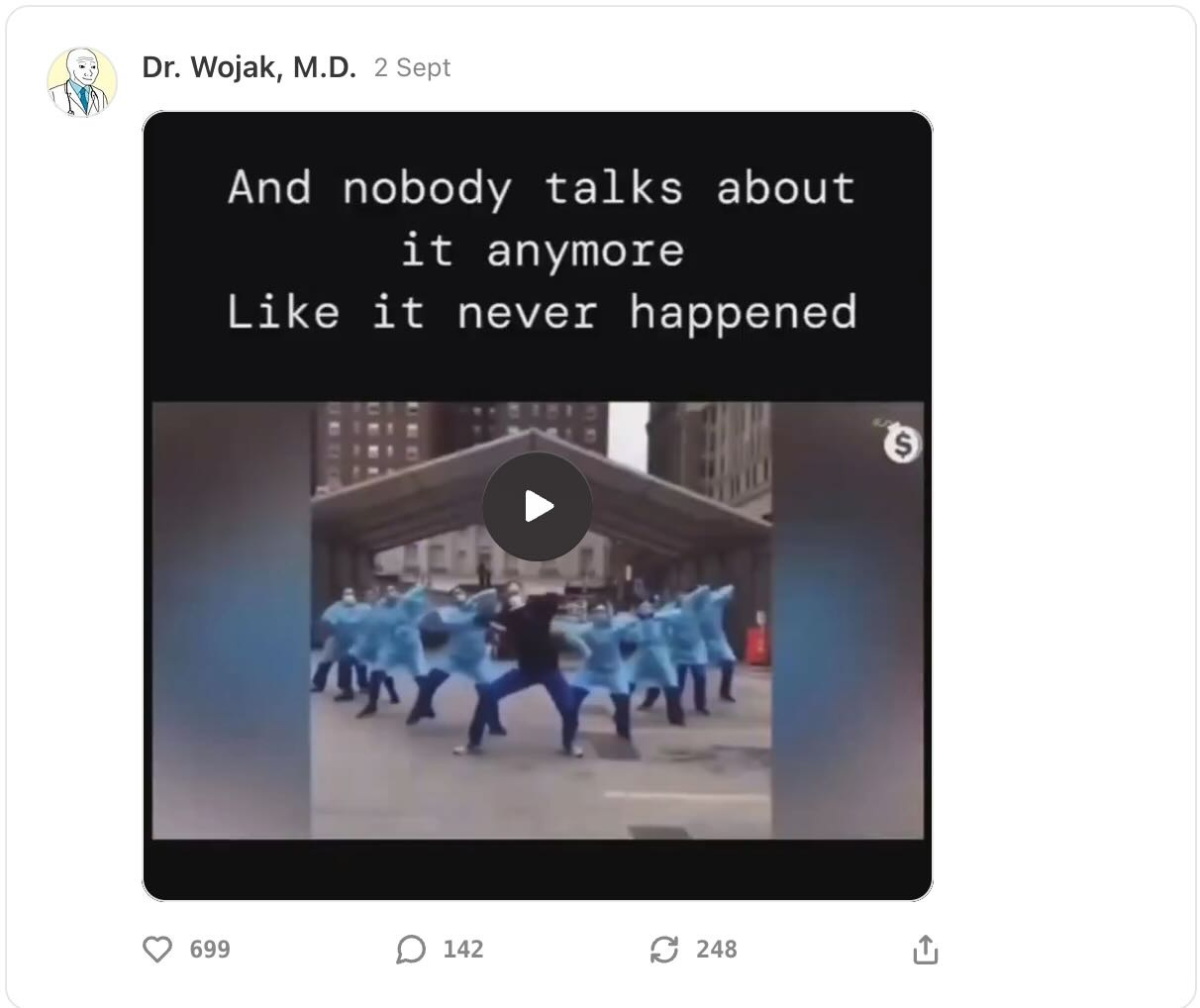
1. The performance of power
In March 2020, as governments around the world declared a state of emergency and citizens huddled in their homes awaiting updates on overloaded hospitals, something strange began to appear on social media: choreographed videos of medical staff dancing in seemingly empty hospital corridors. These were not spontaneous celebrations captured on cell phones—they were carefully produced performances, often set to popular music, with synchronized routines performed by groups of nurses and doctors in full personal protective equipment. From Jerusalem to New York, from London to Melbourne, medical professionals performed coordinated dance routines, while the world was told that healthcare systems were facing unprecedented collapse.
The discord was immediate and jarring. Official messages insisted that hospitals were war zones, that medical systems were on the verge of collapse, and that healthcare workers were exhausted heroes barely holding the line against an invisible enemy. News reports showed refrigerated trucks allegedly storing corpses, field hospitals being set up in Central Park, and grim warnings about the distribution of ventilators. At the same time, however, these same hospitals were producing what amounted to music videos—not one or two, but hundreds, appearing with suspicious timing around the world.
The Rockefeller Foundation’s 2010 “Operation Lock Step“ scenario envisioned a pandemic that would lead to authoritarian control through citizen compliance with emergency measures. The document described how “citizens willingly cede some of their sovereignty—and privacy—to more paternalistic states in exchange for greater security and stability.” But even this prophetic document did not foresee this particular form of psychological operation: the weaponization of absurdity itself. The dancing nurses represented something beyond traditional propaganda—they were a show of force through the deliberate creation of cognitive dissonance.
Paul Linebarger, in his seminal work on psychological warfare, wrote that effective propaganda must maintain internal consistency in order to be believable. But here was something different: propaganda that flaunted its own contradictions, provoking the audience to notice the impossible juxtaposition of crisis and celebration. When citizens pointed out the obvious—empty hospitals while they were told hospitals were overloaded, staff dancing while they were told they were exhausted—they were met not with explanations, but with gaslighting. To question the videos meant that we would be labeled “conspiracy theorists,” that we would dishonor the heroes of healthcare, that we would spread “dangerous misinformation“…
This technique seems to draw inspiration from what Michael Hoffman calls “method disclosure“ — the practice of cryptocracy revealing its activities in plain sight, knowing that public inaction in the face of such a revelation produces a discouraging effect. The message becomes: “We can show you the contradiction between our words and our actions, and you will do nothing. You will accept both the lie and the evidence of it.” It is a form of ritual humiliation that works not through concealment, but through unabashed display.
The dancing nurses were not trying to convince anyone that the hospitals were functioning normally—they were trying to show that the authorities could make citizens accept two mutually exclusive realities at the same time. It was not simply a matter of controlling information; it was about breaking the public’s trust in their perception of reality, creating what Soviet dissidents once called “fog,” where nothing could be known with certainty.
2. The architecture of humiliation
The concept of ritual humiliation in psychological warfare operates on a principle that predates modern propaganda: forcing the subjugated to participate in their own degradation. Ancient conquerors understood this when they made defeated peoples crawl under yokes or bow down to their victors. The dancing nurses represented a refined evolution of this technique—not the humiliation of healthcare workers themselves, but rather of the audience that was forced to watch and accept the spectacle.
Consider the specific elements of these performances. Healthcare workers, the designated “heroes“ of the pandemic narrative, engaged in frivolous entertainment while wearing the very equipment we were told was in critical shortage. They gathered in groups, while citizens were arrested for attending funerals or visiting their dying relatives. They demonstrated that hospitals had both the space and the staff available for elaborate rehearsals, while the public was told that medical systems were facing imminent collapse. Each piece of information exacerbated the offense, creating what psychological intervention researchers recognize as a “cascade of humiliation“ — where each accepted contradiction makes it easier to impose the next.
Peter Pomaranchev, in his analysis of modern propaganda, describes how modern information warfare does not aim to persuade, but to confuse, to create what he calls “censorship through noise.” But the dancing nurses went beyond confusion—they represented something more akin to what happens in abusive relationships, where the abuser deliberately creates situations that force the victim to deny their own perceptions. “That didn’t happen. And if it did, it wasn’t that bad. And if it did, it’s no big deal. And if it did, it’s not my fault. And if it did, I didn’t mean it. And if I did, you deserved it.”
This psychological mechanism mirrors what Robert Jay Lifton identified in his studies of thought reform: the creation of a “doctrine versus individual“ environment, where abstract ideas take precedence over lived experience. Citizens could see the contradiction—hospitals were both overcrowded and empty enough for dance routines—but they were forced to subordinate that observation to the official narrative. This was achieved not through violence, but through social pressure, through the fear of being labeled “conspiracy theorists” or “trolls” for pointing out the obvious.
The timing of these videos was crucial. They appeared just as populations were adjusting to unprecedented restrictions on their freedom. Locked in their homes, separated from their loved ones, watching their businesses collapse, citizens saw images of their “exhausted heroes“ performing synchronized dance routines. It was as if the system was mocking them: “We took everything from you under the guise of an emergency, and now we’re going to show you that it’s not even real — and you’ll thank us for it.”
This represents what Hoffman identified as a key technique of covert psychological warfare: the deliberate disclosure of the method combined with public consent. The real victory is not in deceiving the population—it is in showing them the deception and watching them accept it anyway. Every accepted contradiction reduces the public’s ability to resist, creating learned helplessness on a cultural scale. The dancing nurses were a test, and to a large extent, the public passed it exactly as predicted: by accepting the unacceptable.
3. Bonding with trauma
The phenomenon of the dancing nurses operated within a broader psychological context, similar to what trauma experts recognize as trauma bonding — the strong emotional bonds that form between abusers and victims through cycles of threat and relief. During the pandemic, populations experienced unprecedented psychological stress: isolation from loved ones, economic devastation, constant messages of fear of infection and death. In this environment of constant anxiety, the videos of dancing nurses served a perverse function: they provided moments of cognitive relief through absurdity, even as they exacerbated the overall psychological violation.
The mechanism worked as follows: citizens, already destabilized by weeks of devastating messages, were confronted with these videos and experienced a momentary respite from relentless fear. The cheerful music, the synchronized movements, the smiling faces behind masks and face shields all offered a brief respite from the devastation. But this relief came packaged with its own poison. Accepting the comfort of the videos meant accepting their fundamental contradiction with reality. It meant agreeing not to think too seriously about why hospitals had time for choreography during a crisis that threatened civilization.
This dynamic mirrors what Joost Meerloo described in “The Rape of the Mind“ regarding the systematic destruction of independent thought. He observed that totalitarian systems do not simply impose their ideology through violence. They create conditions where the mind seeks refuge in accepting contradictions rather than enduring the psychological tension of resistance. The dancing nurses created precisely this kind of double bind: either reject them and be labeled a dangerous conspiracy theorist who dishonors heroes, or accept them and surrender your ability to recognize obvious contradictions.
The production quality of these videos deserves special attention. These were not spontaneous expressions of joy from exhausted staff—they required planning, rehearsals, equipment, and editing. Someone had to organize the staff, someone had to choreograph the routines, someone had to film and edit, someone had to upload and promote. This level of coordination in many hospitals worldwide suggests institutional support, if not direct instruction. The message embedded in this production value was itself part of the operation: “We have the resources and the authority to make this happen, everywhere, simultaneously.”
Michael Hoffman’s research on “twilight language” and “method disclosure” provides another lens through which to understand these performances. In occult psychology, the victim must participate in his own degradation for the ritual to be complete. The dancing nurses enforced this participation. Citizens shared the videos—sometimes mockingly, sometimes supportively, but they shared them nonetheless. Every share, every comment, every reaction represented a form of participation in the ritual, regardless of whether the participant supported or opposed the content.
The aspect of trauma bonding became more apparent in the way people defended the videos when asked about them. Stockholm syndrome describes how captives begin to identify with and defend their captors. Similarly, many citizens became aggressive defenders of the dancing nurses, attacking anyone who pointed out the contradictions. They had internalized the cognitive dissonance so completely that protecting it became psychologically easier than confronting it. The system had created its own defenders among its victims, a hallmark of successful psychological operations that Linebarger recognized as the ultimate goal of propaganda: to make the target population impose propaganda on itself.
4. The technology of deception
The dancing nurses represented a new development in what Annalee Newitz calls “weaponized narratives” — stories designed not to inform or persuade, but to destabilize and discourage. But these were not traditional narratives with a beginning, middle, and end. They were fragments of meaning, delivered through the surreal medium of social media, designed to bypass rational analysis and strike directly at psychological foundations. The platform itself—primarily TikTok—was an integral part of the operation, with its algorithm ensuring maximum penetration and its format discouraging critical thinking.
The choice of dance as a medium was neither arbitrary nor innocent. Dance is pre-verbal, physical, primal. It bypasses intellectual defenses and speaks directly to emotional and social processing centers. When performed by people in authority wearing uniforms—especially medical uniforms, which society codes as trustworthy and protective—it creates a specific kind of cognitive dissonance. The brain struggles to reconcile the seriousness associated with health professionals during a health crisis with the frivolity of choreographed entertainment. This failure to reconcile does not solve the problem. It simply exhausts critical capacity.
Consider how these videos proliferated. They did not originate from a single source that could be challenged. They appeared simultaneously on multiple platforms, from multiple hospitals, in multiple countries, creating what information analysts call “source laundering“ — when the origin of an operation becomes impossible to trace because it appears everywhere at once. This gave the phenomenon an organic appearance while serving a coordinated purpose. Individual hospitals could claim that their video was simply innocent stress relief, while the overall effect created a global psychological operation.
The element of mockery worked on multiple levels. On the surface, it mocked the very notion of a pandemic emergency — how serious could things be if nurses had time to rehearse dance routines? But more deeply, it mocked the vulnerability of the public. Citizens who had lost their jobs, missed funerals, been arrested for gathering outdoors, watched their children’s mental health deteriorate from isolation — these people were forced to watch their “heroes“ dance. It was reminiscent of Marie Antoinette’s infamous quote, “Let them eat cake,” except that this time the aristocracy made sure the plebs watched them eat it on social media.
Harry Vox’s 2014 warning about the Rockefeller Foundation’s “Lock Step” scenario proved prophetic, but even he did not foresee this particular improvement in control. The document focused on traditional authoritarian measures—quarantine, restrictions on movement, surveillance. But the dancing nurses represented something more sophisticated: control through performed contradiction, power through absurd display. As Nima Parvini later observed, the regime does not play four-dimensional chess—they telegraph their intentions. The dancing nurses were the telegraph, the message, and the humiliation, all in one.
This technology of mockery serves a specific function in psychological warfare: it identifies and isolates potential resistance. Those who pointed out the obvious contradictions were exposed as “problems” that needed to be monitored, excluded from social media platforms, or socially destroyed. Those who participated in defending the videos identified themselves as successfully programmed. And the huge middle group, confused and discouraged, learned to remain silent rather than risk being lumped into either category. The dance videos became a sorting mechanism, a test of faith disguised as entertainment.
5. The fog of unreality
The dancing nurses ultimately served as a “drug“ in what would become an ongoing campaign of reality distortion. Once the populations accepted this initial contradiction, emergency and entertainment at the same time, they were prepared for greater violations of logic. Masks were imposed on people walking alone on beaches, while mass protests were considered safe. Deadly viruses respected the arbitrary two-meter distances and seating arrangements in restaurants. Vaccines that did not prevent infection or transmission, but were imposed for the “protection of others.” Each accepted absurdity made the next one easier to swallow.
This technique is in line with what Soviet dissidents described about life under late-stage communism—not a society that believed in propaganda, but a society that had abandoned the belief that anything could be known with certainty. Svetlana Boym called this “the shared apartment of the mind,” where contradictory realities coexisted without resolution. The dancing nurses helped construct a similar mental architecture in the West: a space where “the overwhelming overload of hospitals“ and “time for TikTok“ could exist simultaneously without cognitive collapse, because cognitive function itself had been deliberately disrupted.
The long-term psychological damage of this operation extends beyond the immediate period of the pandemic. By successfully forcing populations to accept obvious contradictions, the operation set a precedent. It proved that with sufficient social pressure and fear, people will surrender their most basic ability—the ability to recognize when things are not right. This acquired weakness, which Martin Seligman’s research showed could be caused by repeated exposure to uncontrollable contradictions, became embedded in the social fabric.
Those who orchestrated this operation understood something fundamental about human psychology: people will choose meaning over truth when forced to choose. Faced with the choice between admitting they had been deceived (and thus facing the terrifying implications for their institutions) or constructing elaborate excuses for the obvious contradictions, most chose the latter. The videos of dancing nurses became a test of how much reality could be distorted before it broke down—and the answer was “much more than anyone could have imagined.”
The success of the operation cannot be measured by how many believed that the hospitals were actually empty (there were few), but by how many learned to stop trusting their own observations. When people saw the videos, they saw the contradictions, but they chose silence over speaking up, participating in their own psychological enslavement. This is what Meerloo meant by killing the mind’s capacity for independent judgment. The dancing nurses did not kill thought. They taught people not to trust it.
As we emerge from this period, the challenge is not simply to record what happened, but to understand how it worked—how populations were persuaded to doubt their senses, to accept the contradictions that were enacted, to participate in their own humiliation. The dancing nurses were never about healthcare or morale or stress relief. They were about power—specifically, the power to make people accept the unacceptable, to break the link between observation and conclusion, to create a population that could no longer trust its perception of reality. And in this, unfortunately, they succeeded…
References
Primary sources
Hoffman, Michael A. (2018). Secret Societies and Psychological Warfare. Independent History and Research.
Linebarger, Paul MA (1954). Psychological Warfare. Washington: Infantry Journal Press.
Newitz, Annalee. (2024). Stories Are Weapons: Psychological Warfare and American Thought. New York: WW Norton & Company.
Pomerantsev, Peter. (2019). This Is Not Propaganda: Adventures in the War Against Reality. London: Faber & Faber.
Additional Related Sources
Bernays, Edward. (1928). Propaganda. New York: Horace Liveright.
Bezmenov, Yuri. (1984). Love Letter to America. Los Angeles: Almanac Press.
Desmet, Mattias. (2022). The Psychology of Totalitarianism. White River Junction: Chelsea Green Publishing.
Ellul, Jacques. (1965). Propaganda: The Formation of Human Attitudes. New York: Vintage Books.
Hopkins, CJ (2021). The Rise of the New Normal Reich. Berlin: Consent Factory Publishing.
Kissinger, Henry. (1974). National Security Study Memorandum 200: Implications of World Population Growth for U.S. Security and Overseas Interests. Washington: National Security Council.
Kessler, Arthur. (1940). Darkness at Noon. London: Jonathan Cape.
Le Bon, Gustave. (1895). The Crowd: A Study of the Popular Mind London: T. Fisher Unwin.
Lifton, Robert Jay. (1961). Thought Reform and the Psychology of Totalism: A Study of “Brainwashing” in China. New York: WW Norton & Company.
Meerloo, Joost. (1956). The Rape of the Mind: The Psychology of Thought Control, Mind Murder, and Brainwashing. Cleveland: World Publishing Company.
Rockefeller Foundation. (2010). Scenarios for the Future of Technology and International Development. New York: Rockefeller Foundation.
Seligman, Martin. (1975). Helpless: On Depression, Development, and Death . San Francisco: WH Freeman.
Szasz, Thomas. (1974). Ceremonial Chemistry: The Ritual Persecution of Drugs, Addicts, and Dealers. New York: Doubleday.
Yates, Frances. (1979). Occult Philosophy in the Elizabethan Era. London: Routledge.
Documentary sources
Johns Hopkins Center for Health Security. (2017). SPARS Pandemic Scenario 2025-2028. Baltimore: Johns Hopkins University.
World Economic Forum. (2019). Event 201 Pandemic Exercise. Geneva: World Economic Forum.
END
From howard steen substack
Disclaimer: We at Prepare for Change (PFC) bring you information that is not offered by the mainstream news, and therefore may seem controversial. The opinions, views, statements, and/or information we present are not necessarily promoted, endorsed, espoused, or agreed to by Prepare for Change, its leadership Council, members, those who work with PFC, or those who read its content. However, they are hopefully provocative. Please use discernment! Use logical thinking, your own intuition and your own connection with Source, Spirit and Natural Laws to help you determine what is true and what is not. By sharing information and seeding dialogue, it is our goal to raise consciousness and awareness of higher truths to free us from enslavement of the matrix in this material realm.
 EN
EN FR
FR

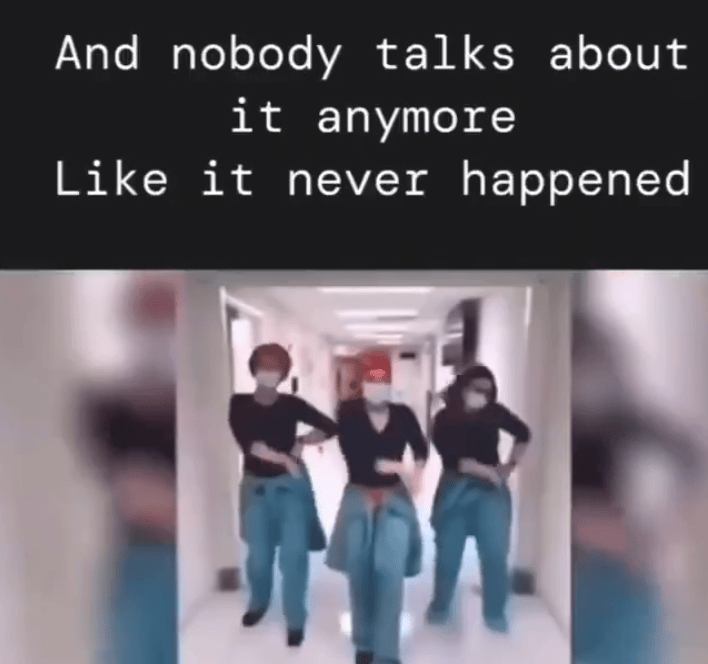



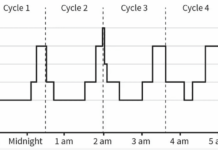



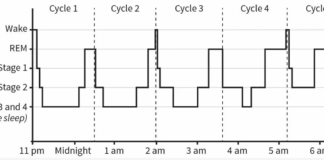



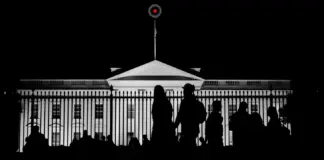













Free from being injected. Free from being victimized as everyone else was. Even the non-vaxed where slandered high as to the cause of the plan-demic and what "Based solely on a Computer generated "Model" As if people didn't listen correctly with comprehension to understand this was a folly lie. Made to believe in by a simple slip of a word in place broadcast cross the planet much of the all same time frame. So hey why not dance up a storm when your now part of the same establishment all arrows pointing to " Creatures of cause perporting acts of deep violence again all humanity ". that would be a title to cause something to run and attempt to hide from. Yet in a word of such as so much has reversed in of its operations to truth honor integrity of a right an wrong of things to express. Accomplice assistants perpetrators, actors and down the line of command. Makes up for the understanding such is to kill and not help to care for says it all. One might believe to consider such is apologetic to a cause. Yet think about all an everyone to whom direct cause to loss of Life is by the loving partners in family as to have lost at such same hand dancers.
And where does it go from here. if apparent truth to Charles Manson as to when he reach parole to be released. Was it a record that he didn't even make it to the far curb across the street before being cut down ending his life. Or another lie put in place died of heart attack.! Paul Benardo is another and J.epstein a one yet accomplice Ghislaine Maxwell gets a pardon for hideous crimes yet to be set free what values are we putting to value to favoritism and the guild of law. or is that now lawless "ness".
Yet too nurses victims also in many way shut up show up do you job and no questions asked. Many tried to find contents of said death venom yet days in the park paid for relinquished future days to asking. Sure the saga continues beyond common daytime favors.